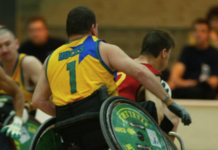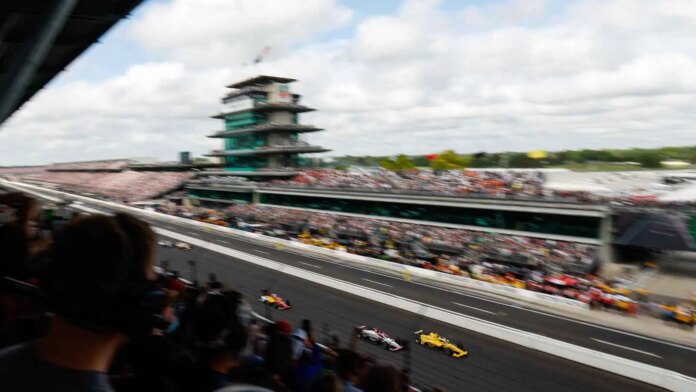It can be easy for Formula 1 fans to assume that oval racing is “just” turning left — but you’d be wrong! Oval racing is a tough discipline to master; you might just need to learn how to watch it.
And there’s no shame in that — after all, we can’t be masters of everything! But if you’ve ever been curious about oval racing, there are plenty of oval events still remaining in both IndyCar and NASCAR. Here are some tips to following your first oval race.
Consistency is key on an oval circuit
With only four corners on an oval track, there’s nowhere for a driver to hide during any one lap — and everything must be perfect. Or, as close to perfect as you can be.
Ovals enable drivers to race at higher speeds, and to really succeed on an oval, you want all of your laps to be about as close to the same speed as possible. Miss an apex or slide a little too far up the track, and you’ll inevitably lose time, speed, and even track position.
In order to make up positions or close a gap, you’ll have to be consistent — and some of the best folks to watch in order to appreciate the oval racing skillset are the newbies. In NASCAR’s Xfinity Series, fans have watched Shane van Gisbergen slowly learn oval racing this year, and it has helped many new fans understand the oval racing process.
Learn the liveries (and drivers) beforehand
On an oval track, a spotter’s guide can come in handy — especially in series like IndyCar or NASCAR, where sponsors can change each week. If you’re struggling to enjoy an oval race, it might just be because you’re at a loss for what’s going on!
If you’re not up to memorizing a full field of drivers, I usually recommend selecting a few drivers’ liveries to memorize, then keeping an eye on their race strategy. That way, you’re not overwhelmed with information, but you can also find a great access point.
If you need a guaranteed entry, I always recommend learning about Team Penske. The team runs roughly the same numbers and a handful of the same sponsors in both IndyCar and NASCAR, which makes it easy to pick out at least one familiar driver. Your knowledge will grow from there!
The oval’s shape matters
It can be easy to assume that every oval is the same (after all, “oval” only involves one shape, right?), but each oval track has its own unique shape — and that shape matters.
“Shape” includes the physical shape of the track — some are perfect ovals, some are more squared off, some are egg-shaped — as well as things like its length and the degree of banking on each turn.
At Gateway, the corners are much shorter than they are at somewhere like the Indianapolis Motor Speedway, and each oval involves a different set of driving skills.
Understanding IndyCar:
👉 Formula 1 v IndyCar: How open-wheel racing’s hybrid powertrains compare
👉 IndyCar vs Formula 1: Junior driver development series ladders compared
A new approach to aerodynamics
All racing involves aerodynamics, but oval racing introduces aerodynamic forces that you may not be familiar with if your background is only in road racing.
On ovals, drafting is huge. Drivers want to stay in the “suck,” or in the channel of clean air being punched out by the car in front. In NASCAR, drivers can line up in two rows, using the force of every car in the row to generate more and more speed. A two-car train can push past a single car on the preferred racing line, just because of how the aerodynamics work.
There are also sideforces; if you’re only turning left, engineers want to create a low-pressure region on the left side of the car. Sideforces can impact a driver’s ability to corner, to race next to someone, and to make passes for the lead.
Pit stop logic
In IndyCar and NASCAR, drivers will inevitably need to pit for fuel and tires at multiple points in the race, and, due to the fewer number of crew members allowed to service a car when compared to F1, the stops take longer.
That means pit stops can play a serious role in oval racing. On a shorter track, you can lose up to three laps on a routine green-flag pit stop. This makes the timing of pit stops critical.
If you can… go to an oval race
Sometimes, the best way to learn about something is to experience it in person. If you have an oval track near you — even just a small one — go check it out in person.
When you attend your first oval, it can be easy to see why people enjoy this kind of racing, even if it may not be your cup of tea. You can generally view the entire race track, which means you can see every car doing its thing.
You can see a driver build up a move over a few laps. You’ll know if there’s a crash — you probably saw it happen! And you might also truly begin to appreciate the mind-numbing speeds that can be achieved at larger ovals.
Attending a race on an oval really helps drive home what has historically made these races work for fans — and it’s because you can see everything happen, giving you the biggest bang for your buck.
Read next: Explained: The chaotic history of the IndyCar split and reunification
Source link : https://www.planetf1.com/features/how-to-follow-an-oval-race-indycar-nascar-guide-for-f1-fans
Author :
Publish date : 2024-08-14 03:03:32
Copyright for syndicated content belongs to the linked Source.





















































